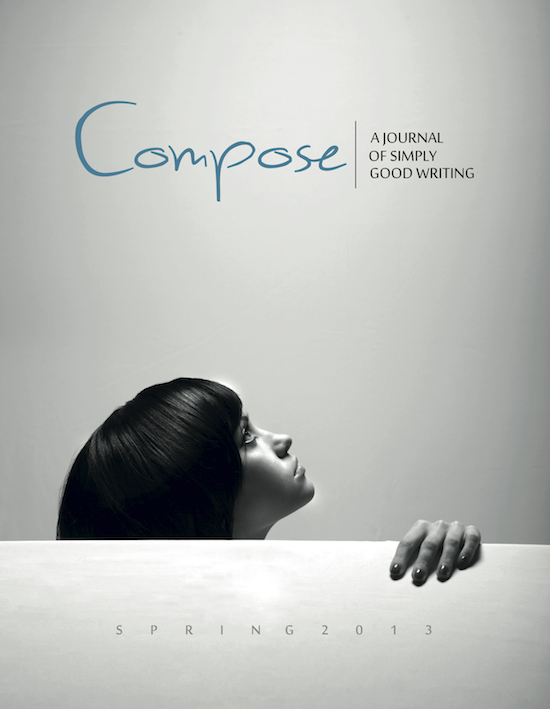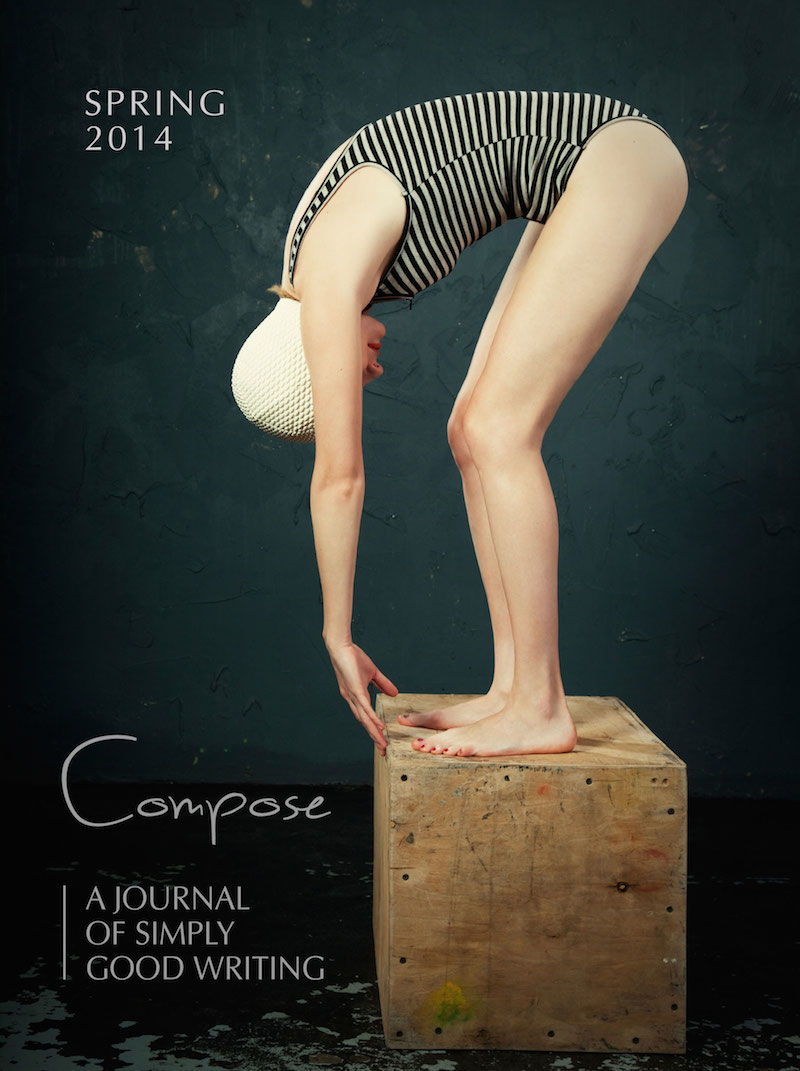Perfect Child

“Could you please not wear a white sweater when you meet Greg?” she asks.
I hold the phone away and make a face at it, put it back to my ear and say, “Sure. Is there a specific reason for this?”
I am scheduling a meeting with my first client at the university clinic where I need to accumulate 300 hours of contact time as part of my speech-language pathology certification requirements. I hadn’t realized the parents of the children I would be working with were going to make wardrobe requests.
“Greg’s only nine,” she says, “but he’s had eleven surgeries for his cleft lip and palate, and the last time we had an appointment with a new speech therapist, she wore a white sweater. He’s such a good boy, but he hid under the table and sobbed. We finally figured out he thought it was a lab coat. He was afraid she was a doctor, and she was going to examine him for another surgery.”
My hand goes to my heart. “No white sweaters. I understand. See you Tuesday at 3:00.”
As I hang up the phone, I recall one of my professors telling us we would always have to repeat information to parents at more than one meeting, because the first time we told them about delays or differences, they would stop listening and start to mourn the loss of their perfect child.
*
Three years later, in 1979, my husband and I purchase our first home, thanks to a down payment loan from my parents. We move in on a crisp, sunny St. Patrick’s Day; I walk down to the business district and use a pay phone to call my university. The news is good: I’ve passed the comprehensive exams for my master’s degree.
I settle in my part-time job at a pediatric rehabilitation hospital, replacing someone who chose not to come back to work after she had a child. One of my professors visits regularly to supervise me until I can apply for my professional license. My office is a converted lavatory, and I’ve placed furniture strategically in order to cover the capped openings for the old fixtures.
Mike,* one of the children I work with, is five years old. His parents do not have custody, and he will eventually be placed with foster or adoptive parents. He is delayed in language development and has trouble focusing. I make sure our sessions include plenty of structure and repetition. One day I am late picking him up because I’ve been delayed in a meeting. The nurse looks confused when I ask where he is. “I thought you’d already gotten him,” she says. We begin to search the hospital, and we ask the maintenance crew to look outside; if he leaves the grounds, he’ll be near a busy city street.
As I trot past my office, I hear a child’s voice. Mike is sitting alone in his usual seat at a low, round table, playing with a puzzle we use nearly every day. As he places each piece in its spot, he names it and, under his breath, in a voice more like mine than his own, he reminds himself, “Stay with me, Mikey. Stay with me.” I lean against the doorjamb, speechless.
*
A teenage girl, admitted in a wheelchair, Karen has severe cerebral palsy, and her speech is difficult to understand. While I work with her on speech production, I also have her evaluated for one of the relatively new devices that will allow her to type messages onto a screen. The funding agency argues that this is not an essential expense, because they could place Karen in a mail-sorting job that would not require her to speak. I suggest that the agency rep’s thick eyeglasses might not be essential, either. The funding is approved. Karen learns to use her new device quickly, and she types this message to me: “I know what you want me to do with my mouth muscles, but I can’t make them do it. Thank you for this.” Her typed words can be printed on a single strip of paper, much like a label maker. After Karen is discharged, I often get lumpy envelopes in the mail: long, folded, single strand letters from her.
*
Our admissions increase. I begin to work full-time, and soon I need to hire another therapist. We try working in the tiny converted lavatory together, but it isn’t feasible, so we keep that space for quiet therapy sessions, and expand to an apartment suite once used by medical residents, tucked into a wing off the back of the building’s main rectangle. The hospital is not air-conditioned, but this space is heavily shaded and stays cool in the summer. We set up our desks in the former living room, and the view from our picture window resembles a forest, with no hint that we are in the middle of a city. We make a right past the tiny kitchen area and the bathroom, complete with a shower-tub combo, to the two former bedrooms, which we use as therapy spaces.
Soon, we begin to see more adolescents who have head injuries, often the result of being hit by cars. Their beautiful brains were shaken and stirred when they landed on the asphalt, their words misfiled. Sometimes they come to us in comas, but quickly make dramatic recoveries, which their parents often credit to prayer. With my new and hard-earned credentials, this makes me quietly furious. When these children are able to answer basic questions, the medical residents clear them to attend the on-site classroom. Within a day or two, the teacher calls me and whispers into the phone, “He can’t remember the names of common objects, much less read and write. Can you help?” I do my best; adolescent language disorders resulting from trauma were not emphasized in my training, but I find them fascinating. I start to look for continuing education programs.
*
I shift in my seat, trying to get comfortable, and my fiberglass bucket chair swivels sharply, banging me into the attached writing surface I share with the rest of my row. It is the third and final day of a weekend course in working with adolescents who have language learning disabilities.
The presenter is a tiny Danish woman who has limitless amounts of energy. At her closing lecture, she seems especially peppy as she clicks the overhead to show us the template she has developed. She has cut and pasted from various standardized tests in order to make something that is truly useful for planning a treatment program. After completing each assessment, she writes a detailed narrative of her findings.
At the thought of all this work, we in the tiered rows emit a collective groan. We’ve been sitting too long in this overly air-conditioned cave, drinking too much vending machine coffee, and munching on too many glazed donuts. Knowing it is Sunday and we must return to work tomorrow, we are hungry for easy answers and quick fixes. We want boxes to check off and numbers to tally. She is not delivering.
She turns to us, marches to the bottom step of the lecture hall, hands on hips, all four feet and nine inches of her vibrating. She stares at us over her half-glasses. “Vell!” she says. “On da veekend you could bake a cake.” She turns, and jabs her pointer in the direction of the screen, “Or you could do ‘zis.” She pauses. We wait. Finally she speaks. “I choose ‘zis!” I groan along with everyone else, but deep down I know I have found a job I’ll be doing forever. While the children’s challenges can be exhausting, the work is endlessly interesting and rewarding. I, too, have chosen ‘zis.
As a child, I’d devoured biographies of professional women: Jane Addams, Clara Barton, Florence Nightingale. I dreamed of doing something important with my life. By middle school, it was clear I was not an educational star. After high school, I floundered. By the time I made it to college, my parents were eager to know what I would be “doing” with my degree. An allied health profession seemed like a practical choice, although I overlooked the fact that I would need a graduate degree in order to practice. Even before I started to take undergrad courses in my major, I was volunteering in the speech clinic at a local hospital on Saturday mornings. The children I worked with convinced me I had chosen the right career. Now, after six years of higher education, hundreds of hours of clinical training, and a rigorous certification program, I’d found this dream job in a pediatric hospital, something my fellow students warned me would never happen, because such jobs are scarce. I am here to stay. I am sure of it.
*
Each morning when I enter the toddler unit, a tiny but sturdy two-year-old male smiles and waves at me. That is the extent of his communication, though, because the only sounds David produces are air-filled squawks when he cries; he has a tracheostomy. If he wants something, he reaches for it while flexing his fingers rapidly. If that doesn’t work, he drops to the floor and thrashes.
I teach him the sign language I know; he picks it up quickly and uses it effectively, with a big smile on his face. Eventually, I notice more and more sound coming out around his trach, so I get permission to teach him to cover it briefly while he speaks. We just play with making sounds at first, so I nearly faint when, one morning, I walk onto the unit and hear his deep voice. “Mu-lis-uh,” he says, before he breaks down in giggles. David has spoken my name, and I am thrilled. My training taught me it is unprofessional to have favorites, but I find it inevitable. I have sometimes thought about trying to adopt David, and I begin to lobby for this over dinner that night. I conveniently ignore the fact that I am terrified of his tracheostomy, and have opted out of learning how to do any of the routine cleaning and maintenance. My husband gently suggests we try to have a child of our own.
*
I walk down the hall to the quiet therapy room with Brad, a lanky boy who had encephalitis of unknown origin. It caused his brain to swell and the result is chaotic: he is lucid at times, but he is also prone to episodes in which he becomes confused and thinks people are after him. He seems fine when I pick him up from the unit, and during our walk, but as soon as we enter the small room, he climbs on top of a low bookcase, perches and crouches as if ready for flight, and screams, “Get off me, get off me. Get off me, or I’ll kick you. Hard.” I am several yards away from Brad, but he clearly does not see it that way. I back quietly out of the room and walk across the hall to Physical Therapy, where I use the telephone to call the head nurse.
As I watch Brad, an adult on each arm, make his way back to the unit, I press my hands against my abdomen; I am heavy with the weight of my growing baby. After seven years at this hospital, sitting on a mat or at a small table each day, trying to help these children find their words, I feel drained and now, a little bit afraid.
*
I am sure my own child will have some kind of serious disability; I so rarely see children who do not. I especially fear a cleft palate, because I know its potential for causing breathing, feeding, and speech problems. I instruct my husband to insert his little finger gently in our daughter’s mouth as soon as she is handed to him in the delivery room. When he does, a nurse says sternly, “What are you doing?” He nearly drops our newborn, but not before he reports that her palate seems fine. Like all parents, we will face fears and challenges, but at least I can cross this one off my list. (My husband claims he did not do this, but remembers that he almost dropped her when he glimpsed my post-caesarean abdomen in its entire splendor. I was on pain medication at the time, so perhaps I am not a reliable narrator.)
Our infant prefers to sleep at short, irregular intervals during the day in order to be fully awake at night. In a fog of exhaustion, and without the option of a longer leave or part-time hours, I resign from my job. I begin to take my daughter for morning walks in her stroller. Worried about money, I no longer buy books. Instead, we stop at our neighborhood library where I check out novels, only one or two at a time at first; I never expect to finish a book again, ever, now that I am on this treadmill of sleeplessness. But I do somehow. Gore Vidal’s tome Lincoln is one of my first, though I remember nothing about it. Toni Morrison, whose first two books had so moved and shocked me in the early 1970s, had continued to publish without my readership while I was in college: I will now catch up. One morning when my daughter is nearly six months old, I wake up before she does, a first, and sit with a cup of coffee, savoring the poetic prose of Harriet Doerr’s Stones for Ibarra.
*
My husband has just gotten home from his teaching job, and has taken our daughter outside to play. She is two now.
I am in the sunroom of our sixty-one year old house. From my desk, I look out a small bay of windows to mature trees that soften the sounds of cars on busy Fairmount Boulevard. I have started a private practice in our home, which means we don’t need to buy a second car, or pay for childcare.
Joel, a second-grader who is having trouble with reading and writing, sits next to me. Each week when I go to the library, I look for lavishly illustrated books about topics that are part of his school curriculum. We begin by discussing the visuals, and then we ease into the text. After we’ve been working together for many months, Joel brings me a drawing he made. It is abstract, full of loops and intricate designs. “It’s my brain,” he tells me. “Before, the wires weren’t touching. Now they’re all connecting to each other.” I pin his drawing to my bulletin board.
I continue to provide academic support for school-age children and then college students, gradually increasing my hours as my daughter gets older. Sooner than I imagine possible, I retire.
Now, as I write these stories, I wonder: did we all start out as perfect children? Do we carry the bright shards of that perfection deep inside us?
*Author’s note: Names have been changed to respect privacy.










